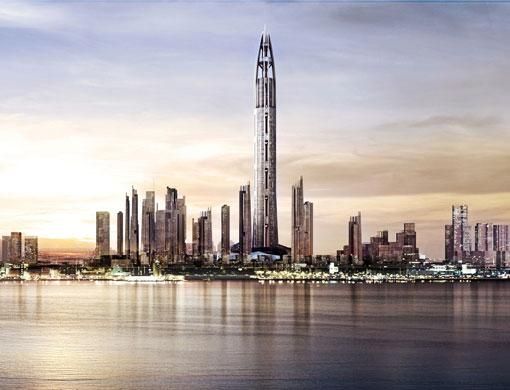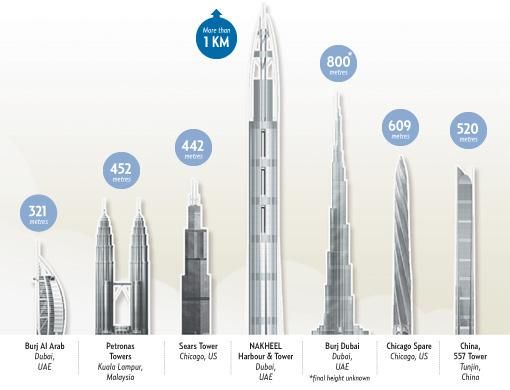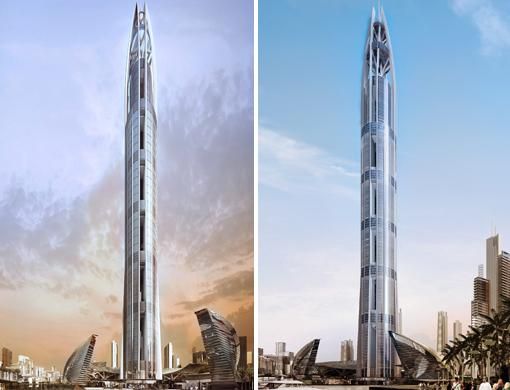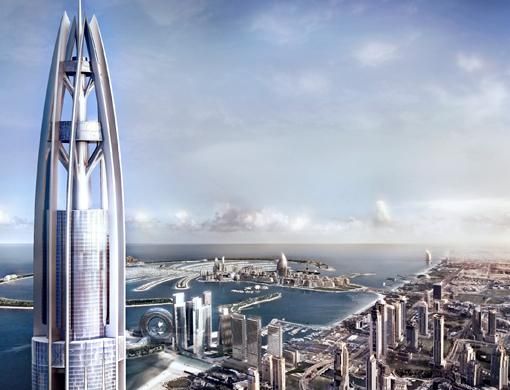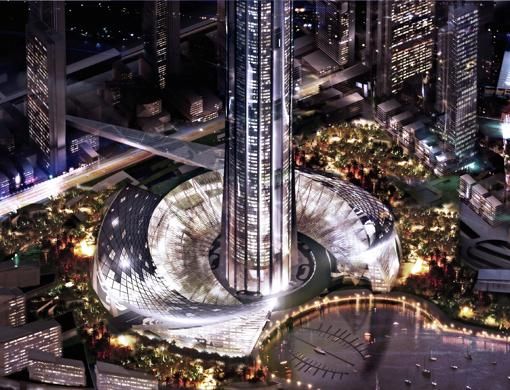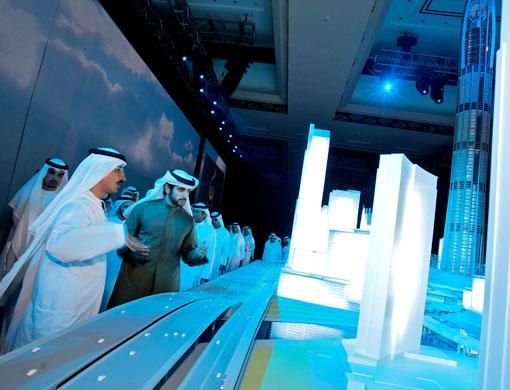Dubai: Nakheel on Sunday announced plans to build the world's tallest tower, at over a dizzying one kilometre high, joining the ranks of companies in the region furiously trying to achieve the same feat.
Nakheel Harbour and Tower will be a 270 hectare development, stretching between phase two of Ibn Battuta shopping mall and the 75-kilometre Arabian Canal.
The one-kilometre-high tower will be the centre-piece of the area.
The tower will have more than 200 floors and will take an estimated 500,000 cubic metres of concrete to construct. Reinforcing bars used in the tower's construction could stretch from Dubai to New York, if laid end-to-end.
The building is so tall that it will experience five different microclimatic conditions from top to bottom.
"From our perspective, we're building a tower over one-kilometre high. It's the tallest by current comparisons," Chris O'Donnell, chief executive of Nakheel, told international media at a briefing yesterday.
This new development adds to the list of Nakheel's "earth-shattering projects", which are adding a combined total of 1,000 kilometres of coastline to Dubai, O'Donnell said.
The development would house the world's first inner city harbour.
Four-in-one structure
The tower will be made up of four towers within one single structure.
The tower will be surrounded by approximately 40 other towers ranging in height from 20 floors to 90 floors.
Other developers are vying to build similar towers.
Saudi Arabia had ambitious plans to build a mile high tower, four times the size of the Empire State Building in New York, with a development value of £5 billion.
However, it has had to scale back its plans due to difficulties in transporting materials to such a height.
Local developer Meraas is also rumoured to be planning an even more head-spinning 2.4 kilometre high tower as the centerpiece of their flagship Jumeirah Garden City project. However, this has neither been confirmed nor denied by Meraas officials.
Nakheel Harbour and Tower will have around 19,000 residential units to accommodate an estimated population of 55,000 people. A further 45,000 people are expected to work in the area.
The development will have 250,000 square metres of hotel and hospitality space and 950,000 square metres of retail space.
There will also be eight hectares of canal, 800 metres of continuous indoor walkways, over 10 kilometres of promenade and a bridge.
O'Donnell also said the development will have around 3,400 hotel rooms, including one "super-luxury" 100-room hotel at the top of the tower.
The development will be split into four sections, including Harbour Bridges, Canals, Harbour Gardens and Harbour Promenade.
Islamic design
The development is based on Islamic design and inspiration has been drawn from the gardens of Alhambra in Spain, the harbour of Alexandria in Egypt, the promenade of Tangier in Morocco and the bridges of Esfahan in Iran.
The project value is not being disclosed to "keep the media interested", O'Donnell said.
He added that the development will take 10 years or more to complete, although certain phases will come online earlier.
O'Donnell said the time was right in Dubai for such a project as the impact of recent global financial misery here has been relatively small.
"The world is experiencing a negative market movement. But this is just part of a normal economic cycle," O'Donnell said.


